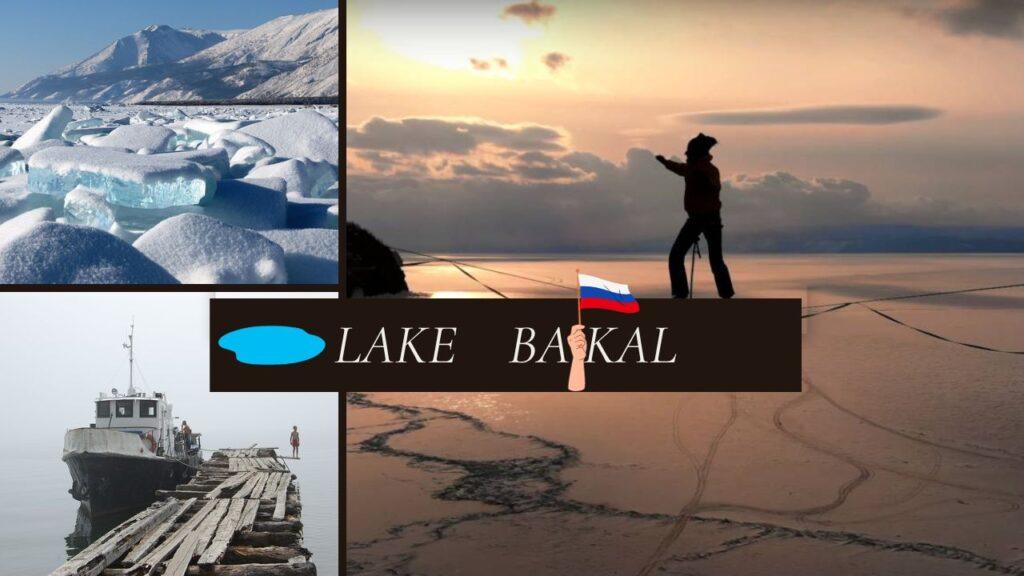Lake Baikal is a huge lake in Siberia, Russia, that holds many records and secrets. It is not only the deepest and oldest lake in the world, but also the largest freshwater lake by volume and one of the most biodiverse and pristine lakes on Earth. This article will take you on a journey to discover the amazing natural wonder of Lake Baikal, its history, its legends, and how to get there. This lake draws Many people and researchers for its unique and fascinating features.
History of Lake Baikal
Lake Baikal was formed about 25-30 million years ago when a rift valley opened up between two tectonic plates. The rift valley gradually fills with water from rivers and streams, creating a deep basin that can accommodate a large amount of water and sediment. Lake Baikal is still growing today, as the rift valley widens by about 2 centimeters per year.
Lake Baikal was first explored by Russian explorers and traders in the 17th century, who were looking for fur and minerals. They established several settlements and forts along the shores of the lake, such as Irkutsk and Ulan-Ude. They also encountered the local people, such as the Buryats, who had been living around the lake for centuries.
Lake Baikal was recognized as a natural heritage site by UNESCO in 1996, due to its unique geological, ecological, and cultural value. The lake is home to thousands of species of plants and animals, many of them endemic to the region.
Lake Baikal also has a rich culture and history, influenced by the traditions and legends of the local people. The lake faces many challenges and threats from pollution, climate change, tourism, and development. Several conservation efforts have been made to protect and preserve the lake for future generations.
How to Reach Lake Baikal
You have various options to travel to Lake Baikal, depending on how much you want to spend, how much time you have, and what you like. You can fly, take a train, ride a bus, or drive a car.
| Mode of transport | From | To | Distance | Time | Cost |
|---|---|---|---|---|---|
| Plane | Moscow | Irkutsk | 4,185 km | 6 hours | 4000-8000 R ($100-$200 US) one-way; 8000-16000 R ($200-$400 US) return |
| Train | Moscow | Irkutsk | 5,153 km | 3-4 days | 5000-10000 R ($125-$250 US) second-class ticket |
| Car or bus | Irkutsk | Listvyanka | 65 km | 1-1.5 hours | Varies depending on car rental or bus fare |
| Car or bus | Ulan-Ude | Gremyachinsk | 250 km | 3-4 hours | Varies depending on car rental or bus fare |
| Car or bus | Slyudyanka | Port Baikal | 100 km | 2 hours | Varies depending on car rental or bus fare |
Legends of Lake Baikal
Lake Baikal is surrounded by a rich culture and history that dates back thousands of years. One of the indigenous groups that live around Lake Baikal is the Buryats, who are related to the Mongols and practice Tibetan Buddhism and shamanism.
Legends and Myths:
The legend of the earthquake: According to this legend, once there was a huge earthquake that shook the land around Lake Baikal. The earthquake caused a large crack to open up in the ground, and water started to gush out from the crack. The water flooded the land and formed Lake Baikal. The Buryats believe that the earthquake was caused by the anger of the spirits of the lake, who were displeased with the people’s behavior. To appease the spirits, the Buryats offer sacrifices and prayers to the lake every year.
The legend of Angara and Yenisei: According to this legend, Angara was the beautiful daughter of Baikal who fell in love with Yenisei, a handsome young river from Siberia. She ran away from her father to join her lover, but Baikal was angry and threw a huge rock at her to stop her. The rock missed Angara but blocked all the other rivers from leaving Baikal, creating Lake Baikal’s unique drainage system.
The Legend of the Flaming Dragon: According to this legend, there was a fearsome dragon that lived in Lake Baikal and terrorized the people and animals around it. The dragon could breathe fire and fly in the sky. One day, a brave warrior named Zul decided to fight the dragon and save his people. He climbed on a mountain near the lake and waited for the dragon to appear. When the dragon came out of the water, Zul shot an arrow at its heart and killed it. The dragon fell into the lake and its blood turned the water red. The people celebrated Zul’s victory and named the mountain after him.
The legend of the Mist Riders: According to this legend, there are mysterious beings that live in Lake Baikal and ride on the mist that covers the lake. They are called the Mist Riders, and they are invisible to most people. They can control the weather and the waves of the lake, and they can help or harm those who travel on it. The Mist Riders are friendly to those who respect them and their lake, but they are hostile to those who harm them or their lake. They can cause storms, fog, or ice to appear or disappear on the lake, depending on their mood.
More topics about Lake Baikal
There are many more topics that you might be interested in learning more about Lake Baikal, such as:
Climate: Lake Baikal has a continental climate, with cold winters and warm summers. The average temperature in January is -19°C (-2°F), and in July is 14°C (57°F). The lake freezes over from January to May, creating a thick layer of ice that can support vehicles and people. The ice is also transparent and has various patterns and shapes, making it a popular attraction for tourists and photographers.
Ecology: Lake Baikal has many plants and animals, many only found there. Some famous ones are the nerpa (a seal), the omul (a salmon), and the golomyanka (a see-through fish that has live babies). The lake also has special ecosystems, like underwater forests and hot vents. The lake makes a lot of oxygen for the air, about 20% of all freshwater oxygen.
Tourism: Lake Baikal attracts tourists with its nature and culture. Tourists can do many activities around the lake, such as hiking, kayaking, skiing, etc. They can also visit historical and cultural sites, such as museums, temples, etc. They can also join festivals and events that celebrate the lake, such as the Ice Marathon, the Shaman Festival, etc.
Conservation: Pollution, climate change, tourism, and development threaten Lake Baikal’s water and life. Many efforts protect and preserve the lake for the future. For example, parks and reserves safeguard their habitats and wildlife. Environmental groups raise awareness and funds. Laws and regulations limit or ban harmful activities.
Lake Baikal is a remarkable lake that deserves our respect and admiration. Millions of years of geological and biological processes have shaped it into a natural wonder, and thousands of years of human history have influenced it into a cultural treasure. It is a living laboratory that offers valuable insights into the past, present, and future of our planet and a precious resource that provides life and livelihood for millions of people. Lake Baikal is a lake like no other, and we should do our best to protect and preserve it for generations to come.
Also, Explore: Top 4 Romantic Castles in England: Why Someone Should Visit






